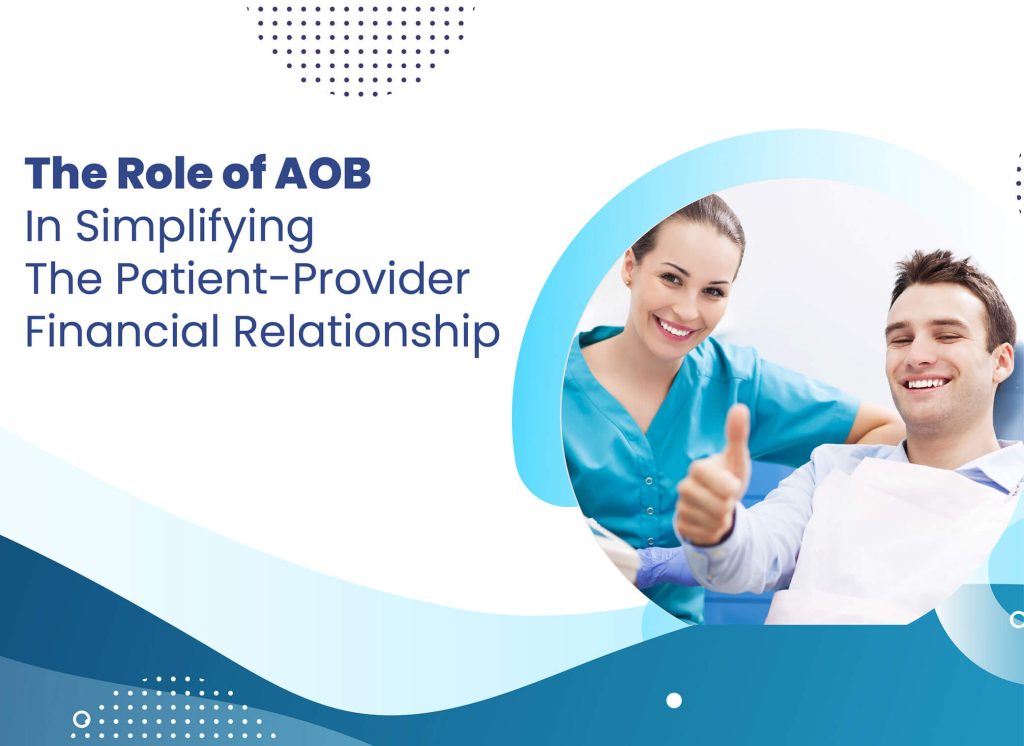
The primary objective of a healthcare provider is to offer quality healthcare to patients and enhance the value delivered. All outcomes, both in value and cost, are generally measured at the patient level. Quality-related outcomes do not always result in better quality. Measuring outcomes at the patient level offers a benefit through a variable called relationship.
Relationships are critical, as most patients suggest that both the interpersonal attributes of the dental team and the relationships with them are paramount. Dental teams also stress how relationships are instrumental for business success and customer loyalty. Relationships are a strong feature in a tech-driven, highly fragmented, and non-personalized healthcare system.
The three major components of the healthcare service provider sector include the healthcare provider, the patient undergoing treatment, and the insurance company that makes the payouts. Here is where the ‘assignment of benefits’ (AOB) comes in, which could be simply called ‘let my insurance company directly pay you.’
AOB is a legally binding agreement between the insurance organization and the patient that facilitates the direct payment of the amount due by the patient to the dental practice or healthcare provider.
How Does the Assignment of Benefits Work?
To strengthen the provider-patient relationship, it would not be incorrect to say that the assignment of benefits is a vital document among the many parts of the healthcare framework. It is an agreement that transfers all insurance claim matters and the benefits associated with the patient's policy to the service provider. This document enables the transfer of payment to the healthcare provider based on the dental plan.
Upon due signing and authorization of the document by the patient, the insurance company must ensure that the practitioner or dental practice is duly reimbursed. For the system to run smoothly, all involved parties must be systematic and clear in their activities. Without an AOB, the responsibility of making the full payment to the dental practice or healthcare provider lies with the patient, who could then file a claim with the insurance company for timely reimbursement.
The Need for AOB
This form provides the insurance organization with written authorization to permit any data to be given by the healthcare provider for initiating reimbursement. AOB in medical billing ensures that such data can be used for billing. The form also indicates that the patient agrees to allow an official from the hospital to request payment from the insurance company. The patient does not need to deal with the insurance organization directly unless specifically asked.
How Does an AOB Bring Clarity to a Patient-Provider Relationship?
Early Engagement with Patients During the Treatment Phase: Communicate to patients about their projected financial outlays and enlighten them on payment methods offered. Avoid payments at a later date as it lowers the probability of receiving balance co-payments early. Along with the AOB, maintain a process for patients when they come for treatment.
Help Patients Understand the Policy: A lack of awareness about insurance details by a patient can lead to arguments or misinterpretations that could hamper the patient relationship. Changes in policy benefits over time can create unpleasant surprises. Checking patient eligibility before each appointment helps the dental team verify policy coverage, while the AOB maximizes the possibility of reimbursement without a direct need to contact the patient.
Maintaining Simplicity: Many people are accustomed to paying bills online, so provide easy access for them to do so. Give them online access to their accounts so they can see what their insurance has paid, view balances, past statements, and financial history, and make payments. Provide easy access to payment processing at every point of service for their convenience.
Discuss Payment Options Before Leaving the Practice: A patient leaving the clinic without paying what is owed diminishes the possibility of collecting the dues at the earliest. The dental team can secure payment for the practice by asking patients how the balance payment will be made. At this point, the team can explain how the AOB will facilitate direct reimbursement by the insurance company, while only the balance co-payment or other charges will be borne by the patient.
An Efficient Process for Follow-Up: A collection upfront is the best outcome for a practice. If a practice does not receive full payment due at the patient end, then communication is key to maintaining the patient relationship and ensuring patient collections. Patients should be provided a choice to receive emails or text messages related to balance notifications, payment due dates, etc. The team can also call patients about pending payments and explain how the AOB has taken care of the major portion of the bill.